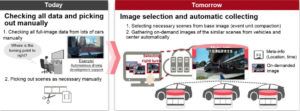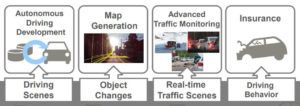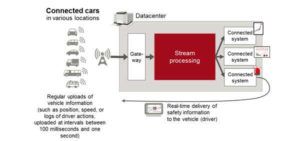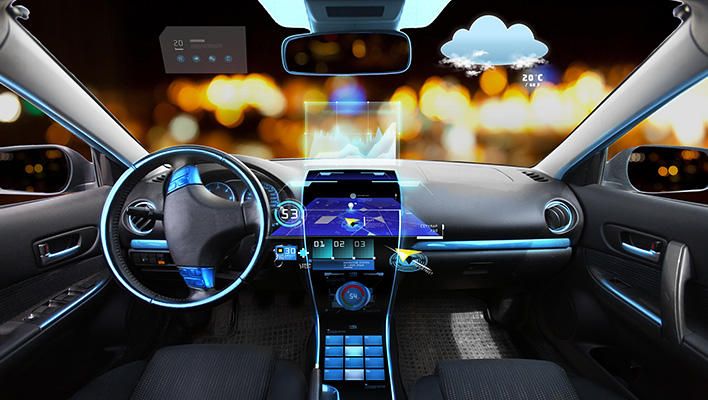Japanese information and communication technology (ICT) company Fujitsu Limited is going to launch a new stream-data processing platform for service providers to maximize the use of big data collected from connected vehicles (CVs).
The new platform facilitates simple and efficient automotive big data analysis by making use of Fujitsu’s Dracena (Dynamically Reconfigurable Asynchronous Consistent Event-processing Architecture) data processing technology, a stream processing system that can add or change content while processing large volumes of IoT data, without stopping. The new platform provides the management and processing of data in discreet units of people and objects including pedestrians, vehicles, roads, and buildings, which are constantly changing in the real-world. This makes it possible to digitally reproduce the surrounding situation, including other vehicles. Continuous data processing additionally offers users the flexibility to add and change services that must operate without disruption, such as real-time hazard prediction for CVs.
 It is predicted that from 2020 onward, the number of CVs will increase exponentially and ‘big data’ from them, including images collected from cameras and sensors, and CAN (Controller Area Network) data, will play an important role in realizing mobility services such as traffic monitoring, maps, and insurance, as well as vehicle design. However, the systems for analyzing automotive data tend to be siloed for each service and there is a need for a system that can various services concurrently. Fujitsu is promoting ‘digital twin’ technology for the mobility space, which digitally reproduces information about vehicles and roads in real-time using its new stream-data processing platform.
It is predicted that from 2020 onward, the number of CVs will increase exponentially and ‘big data’ from them, including images collected from cameras and sensors, and CAN (Controller Area Network) data, will play an important role in realizing mobility services such as traffic monitoring, maps, and insurance, as well as vehicle design. However, the systems for analyzing automotive data tend to be siloed for each service and there is a need for a system that can various services concurrently. Fujitsu is promoting ‘digital twin’ technology for the mobility space, which digitally reproduces information about vehicles and roads in real-time using its new stream-data processing platform.
Fujitsu is offering a Dracena-powered data processing platform where data and data processing programs (plugins) are managed as objects in an in-memory system in stream processing for pedestrians, vehicles, roads, buildings, and other objects from the real-world. Parallel processing, as well as data processing content can be easily said and modified while the system is running, offering service providers the ability to flexibly respond to data analysis and prediction services in various use cases, while providing safe and secure mobility services to drivers and carriers on the road.
 The technology has various applications, such as:
The technology has various applications, such as:
- By analyzing the driving conditions of each vehicle on a road–to–road basis in real–time, the system creates a virtual simulation of road conditions that delivers users almost instantaneous traffic information about congestion, incidents and driving hazards;
- By analyzing and predicting current, past, and future states while processing the data flowing in continuously and saving several instances worth of the results of data processing in memory, the technology offers services like driving diagnostics and failure prevention for components, etc.;
- By improving existing services and adding new services without interrupting existing functionality, it can support new services such as hazard prediction for CVs and advanced driver assistance systems (ADAS), which must operate non-stop.
The new platform consists of essential and miscellaneous optional services including a platform service for managing and executing plugins for individual objects such as pedestrians, vehicles, roads, and infrastructure. After initial availability in Japan, the platform will subsequently be rolled out in North America and Europe. 





